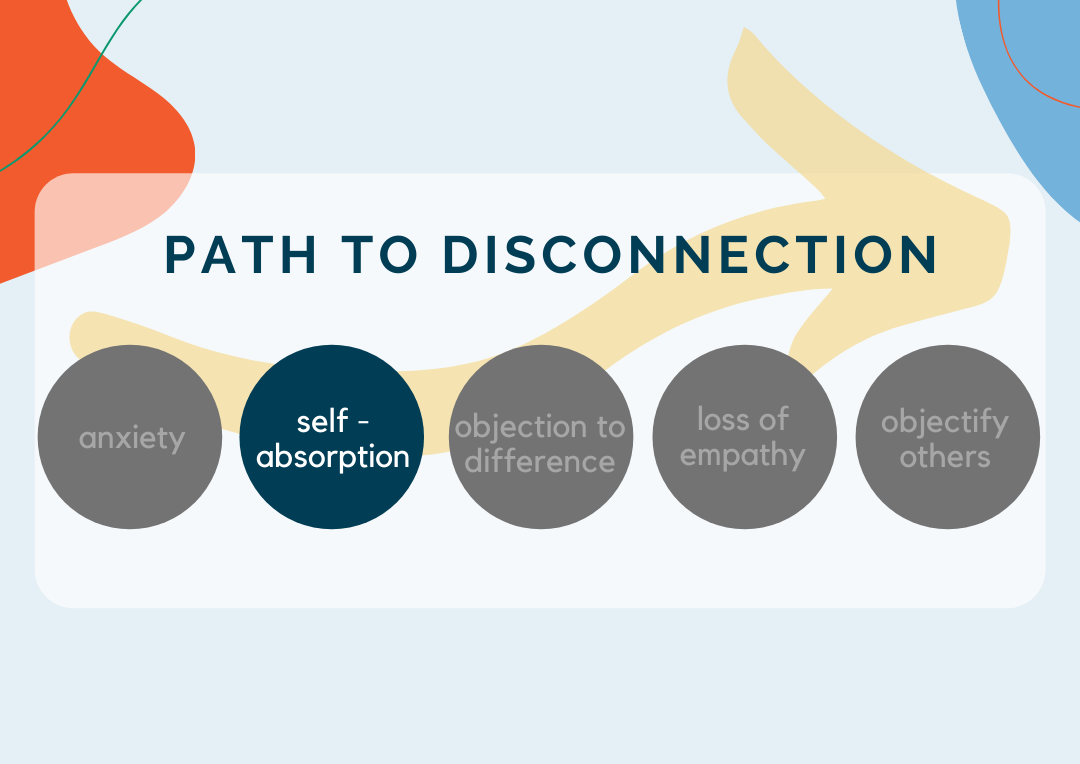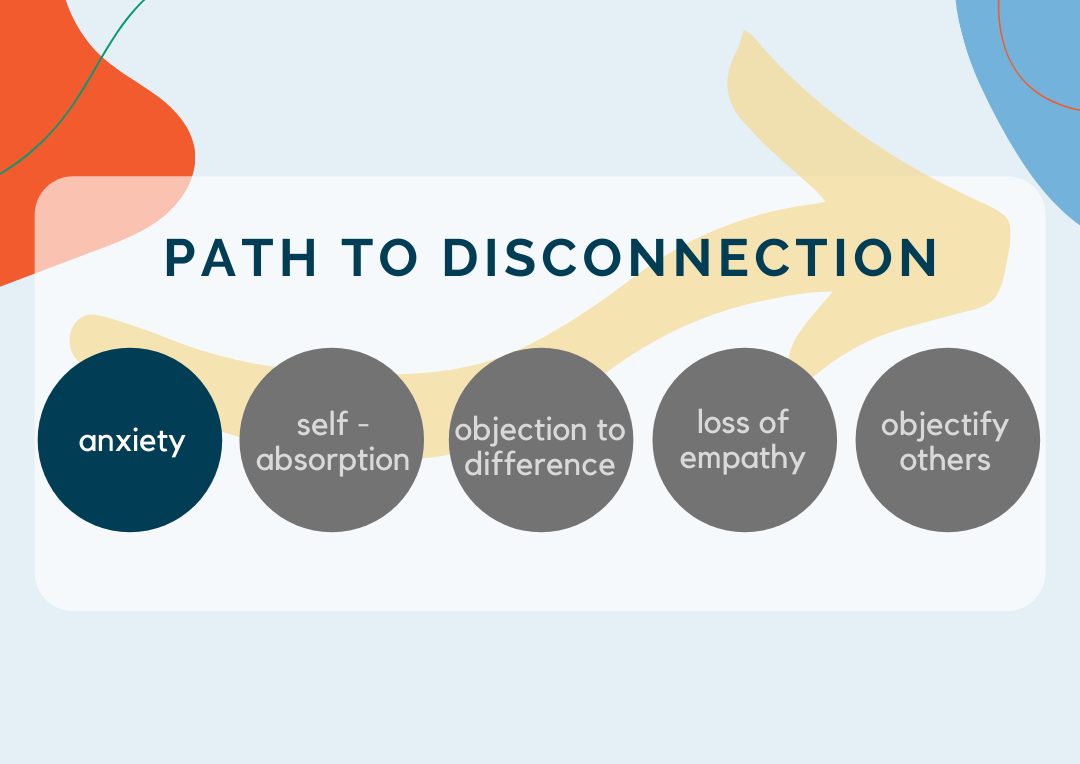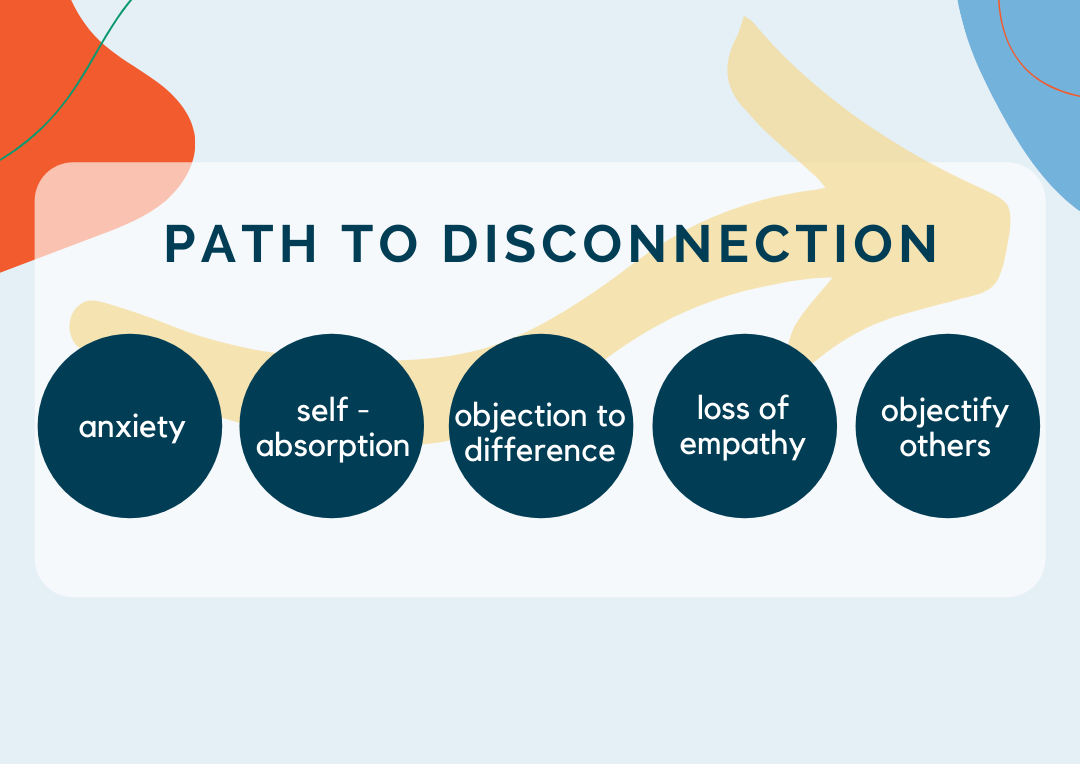SELF-ABSORPTION – In this stage we lose the sense of otherness. The anxiety resulting from our sense of disconnection is so profound that we become unconsciously obsessed with reconnecting. We become so steeped in the fear of separation that our only focus is on ourselves and our own pain. The energy-cost of self-absorption leaves little to spend on other people’s perspectives.
Our last message addressed the pervasive and powerful state of Anxiety, the first stage on the Path to Disconnection. Anxiety was first triggered in us as infants when, for whatever reason, our caregivers were not able to pay attention to us and our needs in certain situations. Perceiving that as abandonment which could then lead to danger or death, we became intently focused on one task: re-establishing our connection.
In this desperate attempt to reconnect we naturally became self-absorbed, feeling only the pain of ruptured connection and the anxiety that pain produced. As we struggled to get our caregiver’s attention, we tried everything we could – crying, shrieking, pointing, and gesturing – with no conscious awareness, just the instinct that we had to do SOMETHING to get them to see us!
When we break it out this way, it’s easy to see how each of us could become self-absorbed pretty quickly! And the thing is, when our shrieking or crying worked, our brains remembered that – success! So that’s what we did the next time we felt disconnected, and the next time. After a while, these “successful” attempts to reclaim connection become habits, which develop into personality traits as our brains grow and become more sophisticated.
So as adults, we find ourselves dealing with the fallout of the habits we formed in our earliest stages of development, long before we had the brainpower to fully understand why we did them and what an impact they might have on our lives.
No one wants to be described as “self-absorbed”. That carries a negative connotation in our society. Yet every single one of us had to be self-absorbed to some extent in order to survive childhood! What’s important to remember is that the coping strategies we used to good effect in childhood often stop working for us as adults. In our present relationships, we must find ways to see past the self-absorption and fully embrace that there are others out there with whom we can connect; we are not alone in this struggle. When we release the false notion or habit of thinking of ourselves only in terms of our pain, we can look up and see that we are indeed connected, and always have been, to a life that’s infinitely bigger than ourselves.
In our next article, we’ll talk about the third leg of our Path to Disconnection, which is Objection to Difference. When we are so absorbed in our own pain and efforts to reconnect, we are only aware of what’s happening inside us, and therefore are cut off from the rest of the world and the people we love. It’s a sad irony that just when we need others the most, we cut ourselves off from them even as we are longing to connect. Aren’t we humans a funny lot?
To learn more about this process of disconnection and how to truly re-connect with the people in your life, check out the SC Essentials online program.
Recommended Reading



